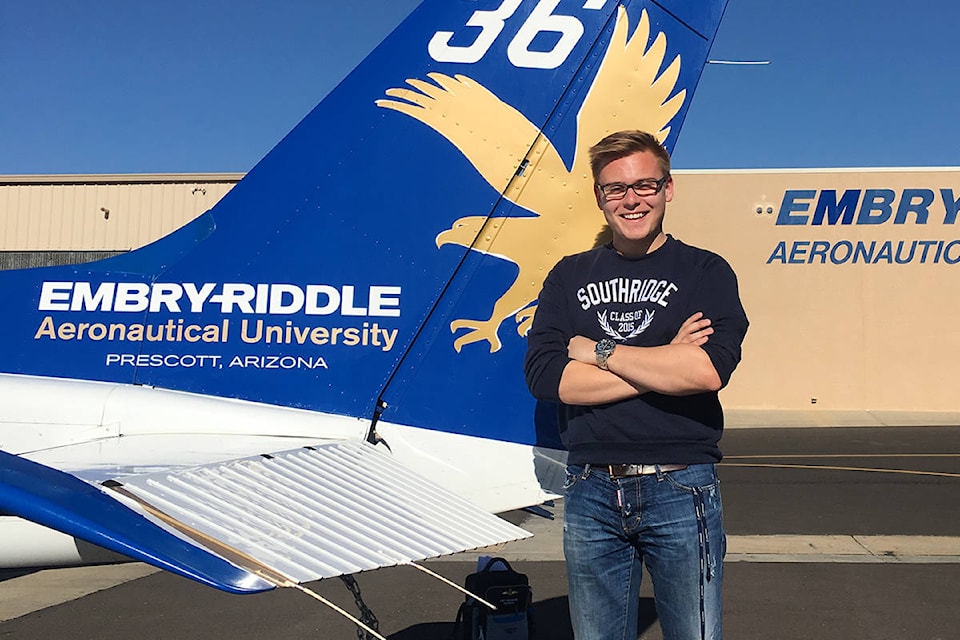When Spencer Thomas was 11 years old, his grandfather took him flying in a Cessna 172.
Last month, Thomas, now 21, was inducted into the International Air & Space Hall of Fame.
The Southridge School graduate is in his third year at Embry-Riddle Aeronautical University’s Arizona campus, studying aeronautical sciences with a minor in aeronautical business administration.
He’s a member of the 2017 Embry-Riddle Golden Eagles Flight Team. The intercollegiate flying team has won the most competitions in U.S. history – 30 consecutive regional championships and 11 national championships, including back-to-back nationals in 2016 and 2017, of which Thomas was a member.
Along with the team captains from each winning year, and six other current teammates, Thomas participated in the Hall of Fame induction at the San Diego Air 7 Space Museum’s Pavilion of Flight Nov. 9.
Today, the museum displays a picture, which is signed by all inductees, including Thomas.
Thomas told Peace Arch News that his family has 100 years of aviation history, and he was hooked on the career path ever since his grandfather took him flying 10 years ago. He took flying lessons – paid for by his grandfather – at Boundary Bay Airport.
“When you’re up there, even when it’s just by yourself or with your buddies, it’s always a good time,” he said in an interview last month. “There’s a sense of freedom up there, getting to see the ground from high up is amazing. You get a totally different perspective of everything below you.”
A duel-citizen, Thomas is hoping to become a first mate or captain at a major airline in North America in the next five to 10 years.
Thomas said he’s in a single-engine Cessna 150 “all the time,” and has logged more than 100 hours in the air since August. He has competed in, and won, three competitions during his time at the university.
He said the flying competitions are precision-based. One challenge is to land the aircraft closest to a marker on the ground with, and without, engine power. Another competition is navigation-based, he said, where team members need to fly a Cessna 172 to a series of destinations at an exact height and time.
He says there’s “not a chance” that he will get bored of the activity, and he’s preparing for four more competitions in the future.
“Usually about two to three weeks leading up to a competition, there’s no limit on flying,” he said. You can fly like 10 times a day.”
